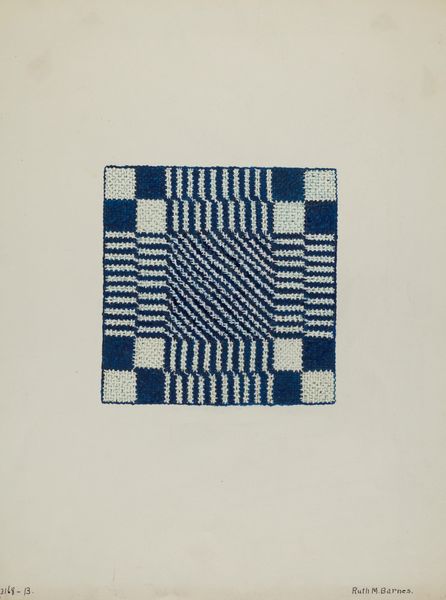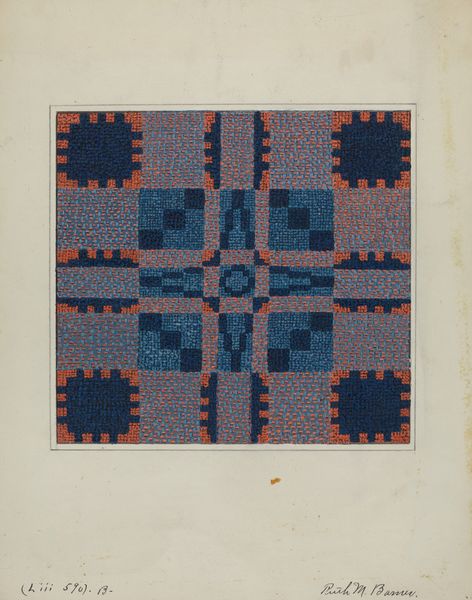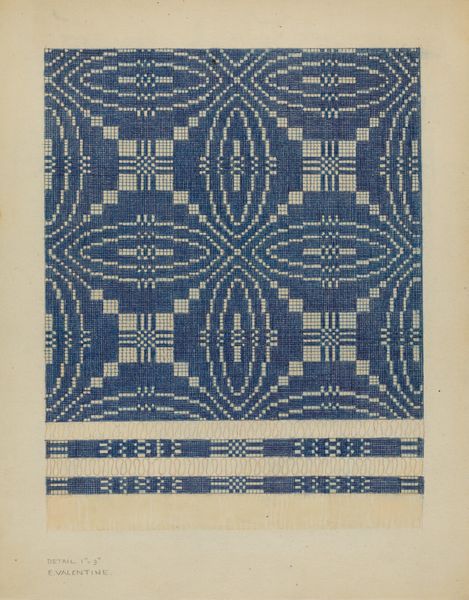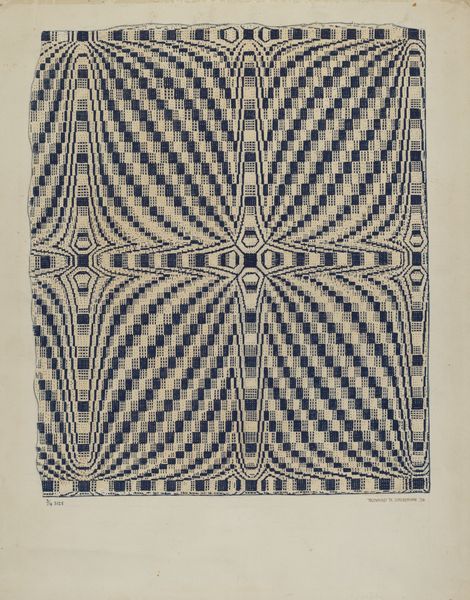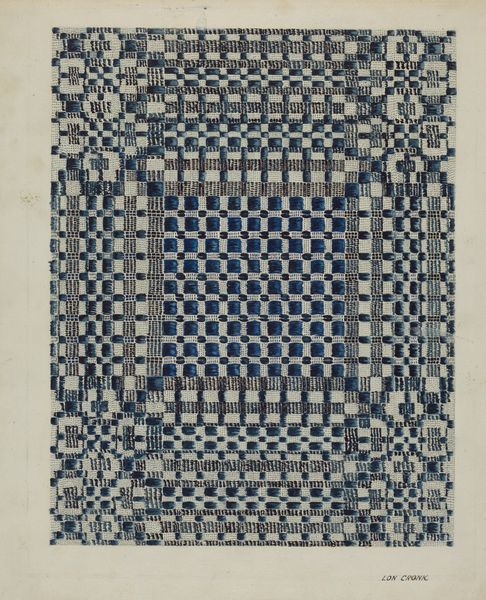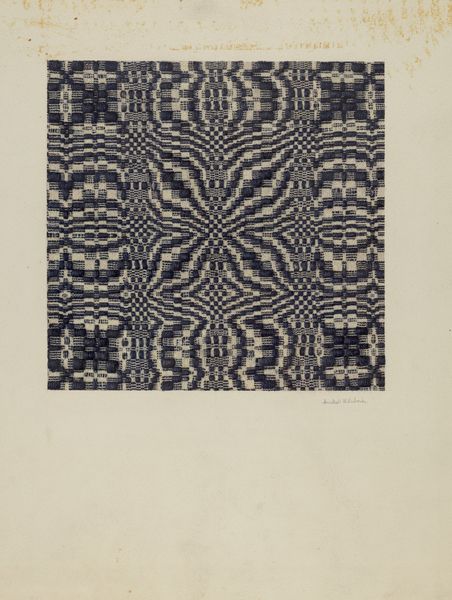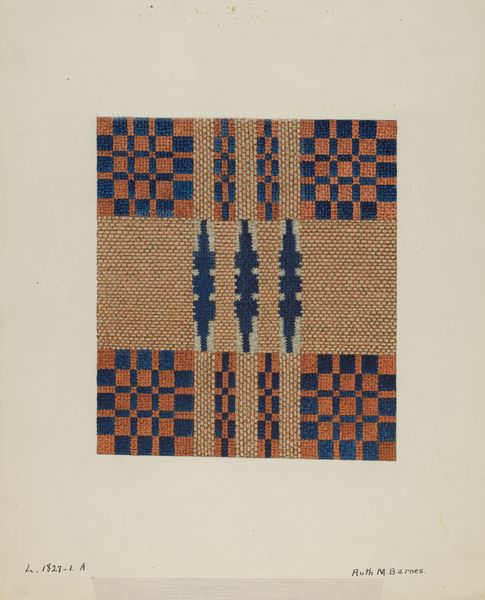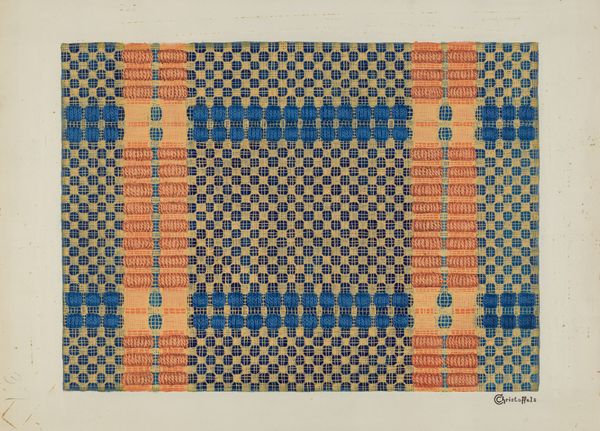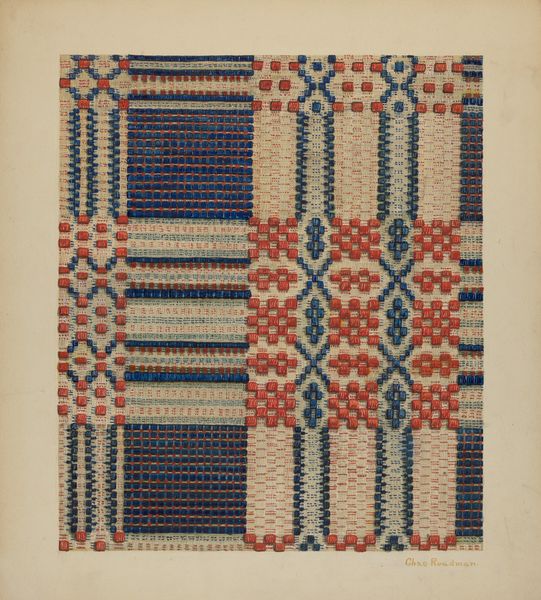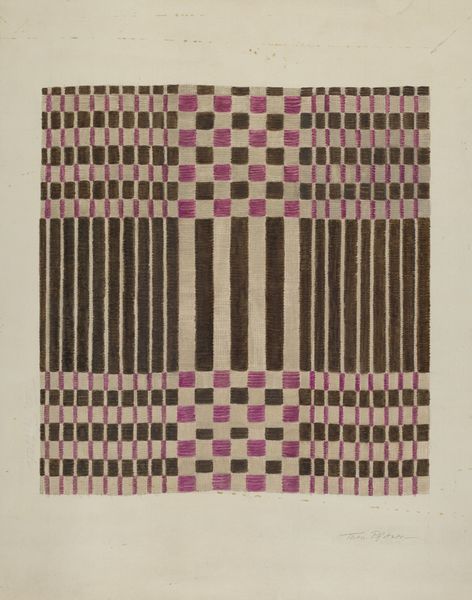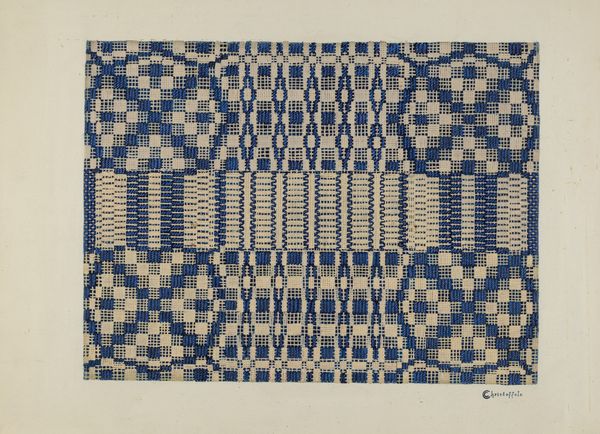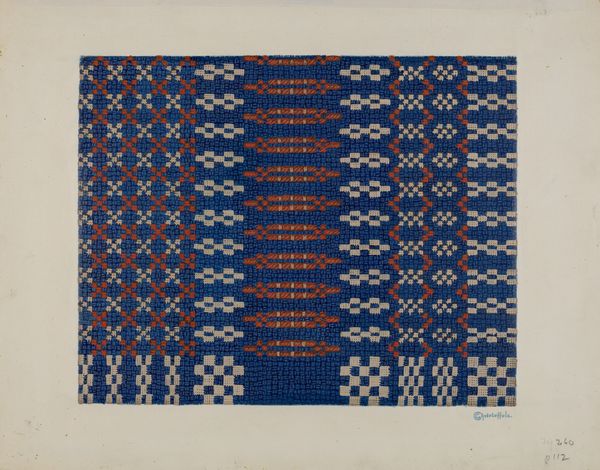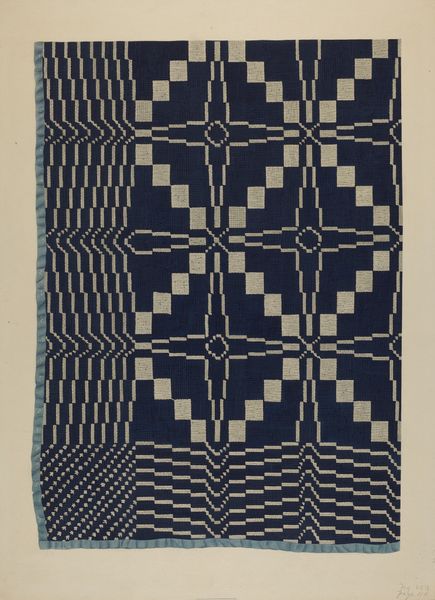
textile
#
folk-art
#
textile
#
folk-art
#
geometric
#
geometric-abstraction
#
watercolor
Dimensions: overall: 35.7 x 26.8 cm (14 1/16 x 10 9/16 in.) Original IAD Object: 60" wide; 72" long
Copyright: National Gallery of Art: CC0 1.0
Curator: Let’s turn our attention to "Coverlet," an intriguing textile work created around 1940. Editor: Wow, it's a vibrant square of blue and white geometry! Reminds me of pixel art, almost like a textile-based early computer graphic. Curator: It is deceptively simple, but speaks volumes about the cultural role of folk art in that period. These coverlets were often community projects, symbols of both domesticity and collective effort. Editor: You can practically see the labor involved. The tight weaves, the repeated patterns, it makes me think of long hours spent at a loom, transforming raw materials into something beautiful and functional. It really speaks to the artistic and technical skills embedded in craft. Curator: Exactly. Think of the pattern as a script – each community had distinct motifs, passed down through generations. These weren't merely decorative, they were declarations of identity and belonging, deeply tied to social memory. Editor: And consider the material—we’re looking at fiber transformed. Someone chose that particular blue dye, prepared the fibers. The maker’s touch is everywhere. It elevates this above just utility and points to artistry embedded in the choices of material transformation. Curator: Absolutely. And viewing this work today asks us to reconsider conventional art hierarchies. It blurs those lines and gives a seat to what had, at one time, no seat at all. Editor: Seeing this Coverlet through its materiality and production process makes me appreciate the ingenuity, care, and tradition imbued into every single thread. Curator: Thinking of "Coverlet" through its function, the context it was crafted in, invites us to consider all makers and appreciate diverse forms of cultural expression and modes of production.
Comments
No comments
Be the first to comment and join the conversation on the ultimate creative platform.
